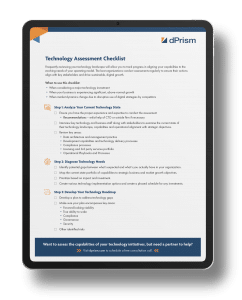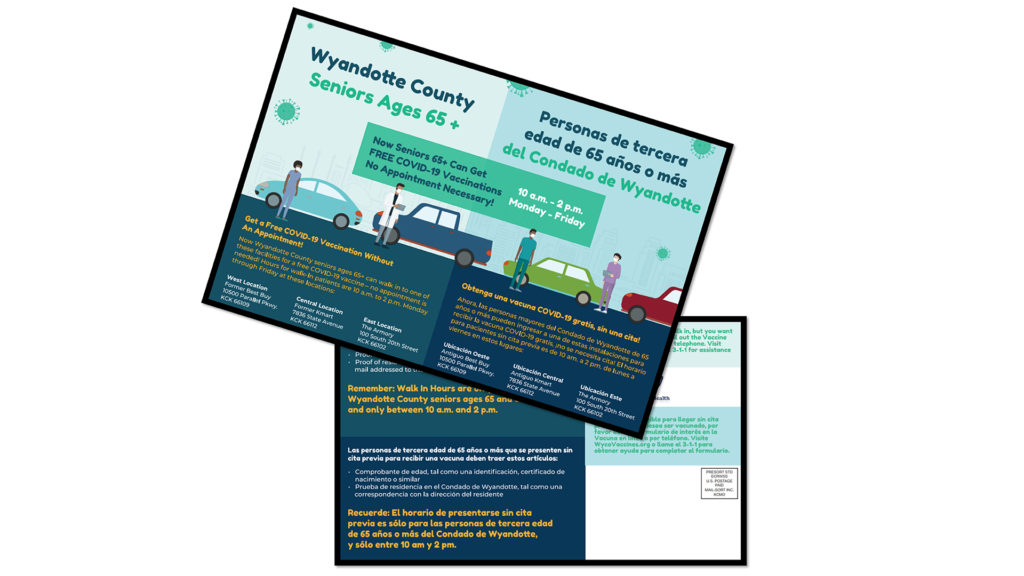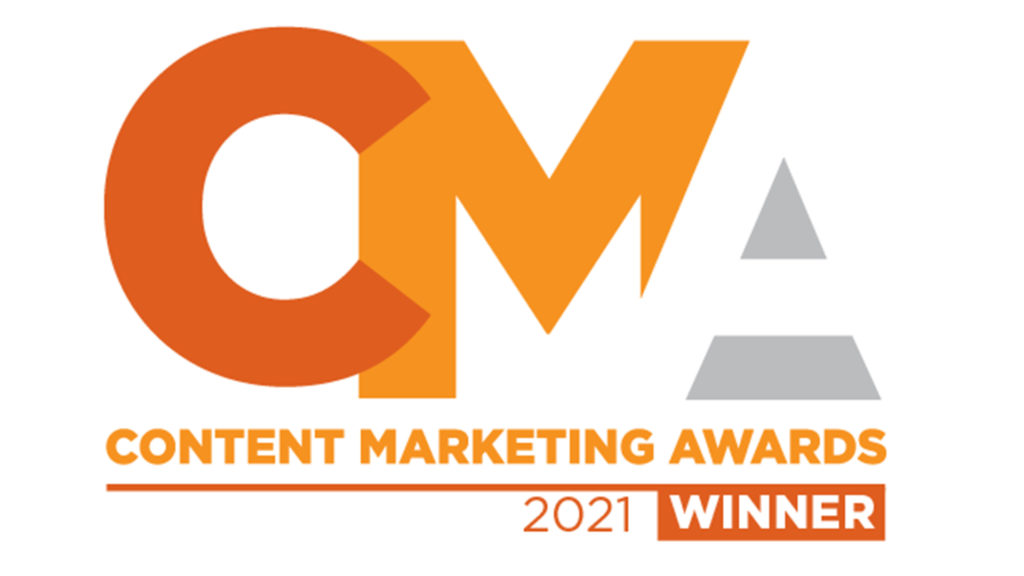Last month was quite the rollercoaster. My father had a sudden trip to the ER due to a serious infection. I rushed to join my family at the hospital, bracing for his week-long stay for IV antibiotics. Dad, ever the independent spirit, wasn’t looking forward to it at all. Understandably so. Prolonged hospital stays can up the odds for further infections, especially at 85. It was a real worry for us.
Three days into my dad’s hospital stay, we were told about the Hospital at Home pilot program. It was perfect for him because he could get hospital-level care right from home. He jumped at the chance, and by evening, he was delivered back home in an ambulance.
The way the hospital, insurers, tech providers, our family—and of course, dad—came together was a real game changer. It was a testament to what digital innovation can do in healthcare. And honestly, it was a win-win for everyone. This experience has some key learnings that can be applied to digital transformation in any industry.
Just like any digital transformation initiative, the true measure of success isn’t just the tech itself, but how People, Process and Technology come together to deliver a successful experience for the customer’s or patient’s benefit. Here’s a snapshot of how that worked.
People Power: Creating a Collaborative Care Team
People come first in digital initiatives because—even if you use AI and machine learning—your team is the cornerstone to success. Everyone needs to be on the same page with a shared goal, a clear roadmap and strong backing in terms of funding and leadership support. This is essential for creating new digital experiences that deliver what people need and want.
The Hospital at Home program was a hit. A team of 10-15 virtual and in-person caregivers were committed to caring for my father at home, making him feel safe and comfortable. Their dedication was evident; they took pride in being part of something innovative. Many even expressed how refreshing it was to step away from traditional hospital settings and work on a project that could heal patients quicker.
This pilot program, funded by insurance, seemed efficient and cost-effective, hinting at savings for the insurance company too. Everyone, especially the caregivers, seemed really invested in making it work.
Process Reimagined: Streamlining Care from Hospital to Home
When it comes to digital transformation, process is key, but it’s an area that is often overlooked. You can’t just add technology onto old processes; that’s a recipe for disaster. It creates disjointed experiences for employees and customers alike.
With Hospital at Home, they reimagined patient care from the ground up, seamlessly integrating people and tech into new workflows. They considered everything—patients at home, families without medical training, caregivers off-site—and made sure the process was crystal clear.
Medications, consultations and scheduling were all streamlined and made foolproof with tech like tablets, phones, smart watches and online platforms. For instance, medicines were brought right to the doorstep by a courier. An EMT, following a virtual nurse’s guidance, administered the medication. As each dose was given, a photo was taken and uploaded to an online platform, keeping a meticulous record of the treatment.
With everyone on the same page, the at-home treatment program turned out to be a smooth and stress-free success for everyone involved.
Technology Integration: The Backbone of At-Home Healthcare
Technology is pivotal in digital transformation. It’s the key enabler that allows businesses to evolve and adapt, offering innovative solutions to traditional challenges. Effective digital transformation leverages technology to streamline processes, enhance customer experiences and unlock new possibilities for efficiency and growth.
The tech provider for the Hospital at Home program, Aaniie (previously known as Smartcare Software), has a clear vision and mission. They focus on streamlining care through technology and providing access to advanced, data-driven systems for better provider outcomes with operational efficiency.
They came to our house before my father came home from the hospital. They set us up with all the necessary gadgets, like a phone and tablet, along with several boxes of supplies. They even ensured there was a backup for everything, including power.
The technology platform was sophisticated yet user-friendly, not requiring any special tech skills or even general familiarity with technology. We had some minor issues with the connectivity of headsets used by nurses, but everything else was smooth sailing.
Lessons Learned: Navigating the Future of Digital Health—and Beyond
Hospital at Home is the perfect example of digital transformation. It’s a classic case of a traditional institution teaming up with an innovative technology provider and backed by insurance funding to create a great experience for patients and everyone involved.
It’s a model for any company thinking of modernizing with digital solutions. It’s a solid reminder that, no matter your industry, embracing technology can enhance customer experiences and streamline operations.
In fact, Hospital at Home delivered on the five pillars below, which are key to successful digital transformation.
- Clearly understand the customer journey and the problems you need to solve
- Define a clear vision, mission and roadmap
- Equally align and balance People, Process and Technology
- Test and refine in a pilot setting, quickly adapting to user feedback
- Track success with specific metrics (like re-hospitalization rates for Hospital at Home) to stay goal-oriented
Mod Op Strategic Consulting specializes in helping organizations across various industries develop and execute successful digital transformations. If you’re planning any initiatives where digital innovation is key, we’d be happy to discuss how we can support your goals. Please reach out to talk about any of your upcoming projects.
About the Author
Len Gilbert is the EVP and Head of Strategic Consulting. With more than 25 years of experience, he helps companies strategically use data and technology to innovate, grow, launch new products, stay competitive and future-proof their businesses against the risks of digital disruption. Len can be reached at [email protected].

The Latest
We study the game as hard as we play it.
Learn with us what’s now and next.
In January, more than 135,000 attendees gathered in Las Vegas for the Consumer Electronics Show (CES), an epicenter of breakthrough innovation.
My return to CES, after a break due to the pandemic, was eye-opening. The event has grown beyond its consumer electronics roots into a dynamic center for media and marketing innovation.
Alongside other key leaders from Mod Op, I immersed myself in the bustling atmosphere, engaging with top executives and thought leaders, and contributing to important discussions on marketing, technology and their societal impacts.
As marketers, we play a powerful role in shaping culture and society. The emerging technologies and trends highlighted at CES are more than just the future of consumer tech. They are indicators of our societal evolution and the paths we set as pioneers of this transformation.
Here are a few key insights from CES 2024 that demonstrate how we influence the direction of both marketing and broader societal trends.
Artificial Intelligence: Transforming the Marketing Landscape
Artificial Intelligence (AI) in marketing isn’t just a buzzword anymore—it’s a pivotal force reshaping the industry. AI is now a key player, driving innovation changing how we work, and impacting agency-client relationships.
AI is no longer just about making things faster and more efficient; it’s about making things we never thought possible happen. Imagine having a marketing sidekick that can quickly sift through tons of data, giving you the insights needed to make fast strategic decisions. You can quickly adapt to market changes, customize campaigns to talk directly to the right people, and even predict what your customers will want next.
AI is also making it easier for anyone in marketing to get creative. Now, you don’t need a huge team to make quality content—you’ve got tools for that. “We saw an array of AI tools at CES,” says Aaron Sternlicht, Chief Growth Officer at Mod Op. “Notably, the GenAI partnership between Nvidia and Getty Images introduces tech that uses prompts to create licensable images owned by clients, avoiding copyright issues.”
And don’t forget about talking to customers. AI chatbots and virtual assistants are making those conversations personal like they’re part of the team. They have natural conversations, helping with everything from answering questions to selling products.
When it comes to AI in marketing, focus on these key areas:
- Change How You Work: Look at your current marketing processes and see where AI can streamline operations, reduce manual efforts, and increase efficiency. This could be anything from customer segmentation to performance tracking, all done smarter and faster with AI’s help.
- Effectively Use More Data: AI thrives on data. It’s a great tool for predictive analytics, customer behavior analysis and real-time market trend monitoring. Use the power of AI to analyze large data sets and uncover hidden patterns, spot trends and provide insights into customer behavior.
- Team Up with Forward Thinkers: Work with agencies, like Mod Op, that are good at bringing AI into the marketing mix. They can help you evolve your marketing strategies to help future-proof your business. A forward-thinking agency can guide you to not just keep up but really take advantage of all the new opportunities AI brings to the table, so you can stay on top.
Marketing is quickly evolving due to AI. It’s creating an industry where innovation, efficiency, and personalization are key. But as we race ahead to incorporate AI into everything we do, my colleague Tessa Burg CTO at Mod Op, who also attended CES, provides a word of caution.
“It’s important for marketers to understand how the AI models were trained, what data is being used, and how much effort it takes to deliver the personalized, predictive, and generative outputs to ensure accuracy and efficiency.
AI isn’t just ‘cool tech’ anymore—CES proved that it’s sparking a whole new way of thinking in marketing. Agencies and clients are starting to use AI to shake up strategies and redefine the way we work.
Cookie Deprecation: What Every Marketer Needs to Know (if you don’t already)
One of the biggest topics at CES was about moving away from third-party cookies in web browsers, especially on Google Chrome. This change is all about protecting user privacy—something other browsers like Safari and Firefox have already started doing. Third-party cookies have been key for tracking users across different websites, enabling targeted advertising and retargeting campaigns. But as we phase them out, we’re losing valuable data that we’ve relied on for so long to guide online advertising strategies.
The marketing industry is adapting to focus on first-party data collected directly from online visitors. It’s a win-win because first-party data is more privacy-compliant and allows businesses to understand customer needs and tailor experiences based on user interactions with their company’s own site.
Burg says she was impressed by Reddit’s first-party data collection. She says, “I find their ‘Key to Context’ activation so refreshing because it showed how conversations with customers can provide data that leads to more accurate marketing. At Mod Op, we often focus on building lasting customer relationships through community. Data from that wealth of user interactions is becoming a crucial tool for targeting in marketing.”
Unsurprisingly, advertisers are hoping AI will fill the gap left by third-party cookies. AI can help keep data clean and unified, which means we can count on accurate customer insights. AI can also hyper-personalize marketing strategies thanks to data analysis, predictive algorithms and machine learning.
But watch out for ‘dirty data’—that’s inaccurate or incomplete customer information, which can lead to ineffective strategies. That’s where tools like Customer Data Platforms (CDPs) come in handy, helping to make sure the data you use to power your marketing campaigns is clean and reliable.
Maximizing ROI with AI: Media Attribution Engine Transforming Marketing Efficiency
AI-powered media attribution tools are changing how we measure and optimize media ROI. These tools provide a clear, accurate picture of campaign effectiveness across different channels. In fact, we use the Mod Op Media Attribution Engine to guide our clients through a maze of publishing platforms. It’s a standout tool that simplifies a complex space.
AI attribution tools process vast amounts of data from multiple sources, providing a full view of the customer journey. This shows marketers which channels and strategies are driving conversions. The Mod Op Media Attribution Engine is a perfect example—it lets our clients see the real impact of their marketing across many platforms. This means we can make smarter decisions about where to invest our marketing dollars.
These AI tools are real time-savers. They automate data collection and analysis, freeing up marketers to focus on developing and executing strategies. Plus, with automation, we reduce the likelihood of human error, which means we can trust our data more when making big decisions.
Technology is rapidly reshaping the way we work and live. Staying on top of it is no longer an advantage—it’s a necessity. Pay attention to the technology, trends, and ideas shaping the future of our industry and leverage them in your future marketing strategies and initiatives.
About The Author
Jonathan Verk has been building companies and brands in entertainment, advertising, tech, and media for over 25 years. He was named the Executive Vice President of Growth and Business Innovation at Mod Op following the acquisition of CreativeDepartment in 2023. After the sale of an early AI ‘telehealth for divorce’ app in 2021, he launched CreativeDepartmint to help Fortune 500 companies navigate and leverage Web3. CreativeDepartmint helped clients such as Warner Brothers, CBS, Fox/Blockchain, Creative Labs, and Boston Pizza drive over $10M in revenue launching NFTs, metaverse activations, and Blockchain games.

The Latest
We study the game as hard as we play it.
Learn with us what’s now and next.
Big tech changes are already in motion. This includes the final demise of the third-party cookies, the continued generative AI race, and the turbulent state of the social media platform we fondly remember as Twitter. We’re predicting that 2024 is destined to be another interesting year for marketers.
Looking ahead, we asked leaders across Mod Op to share their expectations for the upcoming year, especially the role of technology in marketing. They’ve shared thoughts on everything from evolving consumer expectations to the importance of technological governance. Here are the key marketing trends we believe will emerge in the coming year.
Marketers will uninstall apps, embrace data quality and go back to brand
Marketers rode the rollercoaster from “AI is the next big thing!” to “Hold up, why isn’t this magic?” and landing on “Got it, here’s how we make it work.” It’s the classic AI/ML cycle of acceptance. We’ve seen a lot of marketers playing mad scientists, experimenting with ChatGPT and similar tools. And hey, I’m all for it! It’s been a blast seeing them amp up productivity, stoke the fires of creativity, and churn out quality insights. Plus, they’ve learned the hard way that owning a shiny AI tool and wielding it effectively are worlds apart.
Marketers have had a long-time crush on data, but now, like a mature romance, it’s less about allure and more about substance. The right data, carefully chosen and finely tuned, is what will make AI and ML (Machine Learning) sing in harmony with a brand. So, in 2024, expect to see marketers clearing out their app clutter, zeroing in on AI efforts that truly embody their brand, and buddying up with data scientists to effectively sift through the data goldmine.
Tessa Burg, CTO at Mod Op
Brands will focus less on Environmental, Social and Governance (ESG)
In previous years, brands shouted from the rooftops about their ESG initiatives. This often led to positive media coverage on environmental or social justice issues. Make no mistake—these are excellent initiatives and deserve praise.
Unfortunately, they have become increasingly politicized, with a growing chorus of “anti-woke” voices undercutting the halo-building power of ESG-related storytelling. In an election year, where candidates have introduced anti-ESG legislation, the spotlight on these initiatives will be even brighter. Ultimately, and unfortunately, this will have a chilling effect on PR about ESG campaigns.
Brands will be less likely to highlight ESG initiatives and will be more conservative, overall, in the topics they choose to speak on. Recent layoffs at ESG media outlets also capture this shift. That’s happening because advertisers are wary of the current climate and are cutting back on advertising spend alongside ESG content.
Chris Harihar, Executive Vice President of PR at Mod Op
LED technology will continue to drive bigger screens—indoors and out
I expect we’ll see more gigantic indoor and outdoor LED experiences under construction—whether they make money or not. The excitement and attention that the Sphere in Las Vegas has received is a good example of this. Plus, a large gaming stadium with 5,000 seats was recently introduced in Saudi Arabia. It features an impressive LED screen that hangs like a chandelier and covers 3,600 square meters.
The growing trend of incorporating transparent LED screens into building designs will transform large exteriors and even entire structures into dynamic display screens. Convention venues are installing large transparent LED screens at their entrances, allowing show sponsors to make a striking impression on guests as they enter the convention centers. Plus, shows like the Mobile World Congress in Barcelona and ISE Europe are using them.
The trend is for both new and existing buildings to use transparent LED screens. These screens are popular because they don’t block views and they offer an additional way for building owners and convention center operators to earn money from outdoor advertising. However, the issue of light pollution created by these screens is becoming a whole other story.
Mark Bennett, Executive Vice President, Mod Op Creative Studio
Consumers will demand better content experiences
Marketing is becoming more and more about creating an experience—because that’s how humans make decisions. This understanding, coupled with the pricing and availability of technology that make customization possible, will drive the demand for exceptional, customized content experiences in the new year.
To compete in 2024, brands must customize their content for different channels and audiences, focus on engaging mobile users, and understand the specific needs and challenges of their target audience. They should create content that is not only relevant and interactive but also truly resonates with and engages challenges and aligning those challenges with interactive and engaging content.
Customers expect exceptional content experiences. Creating good content just isn’t good enough.
Kip Botirius, Executive Vice President of Client Experience at Mod Op
Zero- and first-party data will become a primary driver of brand marketing and community building.
The continued shift away from third-party data reliance will refocus efforts on generating consumer insights directly from engagement and interaction in owned environments.
Brands now recognize the need to stay committed to building more authentic, trust-based relationships with consumers as the industry moves to meet increasing demand for privacy management and regulation.
Brands adopting a first-party data strategy should expect improved customer engagement and loyalty, which is essential in this moment where maximizing customer lifetime value is high on every company’s growth agenda.
Additionally, community data will play a linchpin role for brands in aligning business operations, influencing product development and informing marketing strategies.
Tomas Madrilejos, Associate Director, Audience Strategy at Mod Op
With greater personalization comes great expectations
The ability to customize content will become much more attainable for the average advertiser in 2024. Thanks to AI, what used to involve a heavy lift in resources can now be done much more efficiently—and you won’t even need to venture far to find these tools. Take Meta, for example: you can now use Generative AI tools for image expansion, background generation and text variation directly in the platform. As these tools continue to roll out and improve, we’ll see personalization of ad content become more commonplace. And once that trend is felt by the consumer, it will become more clear when an advertiser doesn’t customize. For strong engagement, conversions and return-on-investment, personalization won’t just be ideal—it will be essential.
Christina Phillips, Account Director, Client Experience at Mod Op
We’ll experience a shirking PR-media chasm
In 2024, I expect to see the emergence of online communities that foster more authentic relationships between journalists and publicists—moving away from the sometimes frustrating and often transactional interactions that seem to currently dominate the industry. The focus will be on publicists actively cultivating thoughtful, symbiotic relationships with media as opposed to working as ‘adversaries. Through platforms like Discord, we’re already seeing the beginnings of more meaningful dialogue—publicists and journalists engaging equally to collaborate on stories and exchange valuable insights, connections and feedback which ultimately elevates the quality and depth of coverage we can deliver for our clients and reporters for their audiences.
Patrice Gamble, Director of PR at Mod Op
The importance of the intersection of unstructured feedback and AI grows
The intersection of unstructured feedback and artificial intelligence will grow in importance in 2024. Traditional market research relies on structured feedback (surveys) while unstructured feedback comes from a wide variety of sources, such as social media posts, blog, online platforms, comments, online reviews, emojis, images, customer services calls, chats, messages and more. Once the unstructured data is collected, natural language processing (NPL) can summarize topics and keywords. Prior to NLP, it was daunting and expensive to process unstructured feedback. With the technology available today, it’s much more possible to mine unstructured feedback for actionable voice of the customer intel.
Lauren Schmidt, Director of Client Services and Strategy at Mod Op
The end of third-party cookies will usher in creativity and innovation
I foresee a pivotal shift in the marketing landscape as third-party cookies bid adieu. This departure will catalyze a fundamental re-imagination of how marketers connect with audiences. I expect a pronounced divergence between B2B and B2C approaches. B2B strategies may lean into precision-targeting specific audience lists or harnessing the power of retargeting, capitalizing on a narrower scope. However, for B2C clients characterized by diverse and nuanced individual profiles, assembling audience lists becomes a complicated task. There will be an imminent necessity for marketers to pivot towards creativity as the cornerstone of audience curation. Crafting these lists will necessitate inventive methodologies that transcend conventional cookie-based tracking, compelling marketers to explore innovative avenues for audience segmentation and outreach. This transition heralds an era where strategic creativity becomes the linchpin for navigating the complexities of reaching diverse B2C audiences. I envision a future where marketers who master this artistry will flourish, delivering resonant messages tailored to the nuanced tapestry of consumer profiles, despite the vanishing roadmap of third-party cookies.
Maria Antonietta Velasquez, Ad Operations Manager at Mod Op
What marketing trends do you expect to see dominate 2024?
Connect with Mod Op on LinkedIn to share your thoughts.
About the Author
Anna Julow Roolf is VP of PR at Crenshaw Communications, a Mod Op company. A natural communicator and skilled operations professional, Anna is passionate about bridging the gap between creativity and technology. She brings more than a decade of experience in the B2B PR industry, including leadership roles in both agency and SaaS startup environments, working with brands like Act-On, Pelican Products and Zoom.

The Latest
We study the game as hard as we play it.
Learn with us what’s now and next.
As people discuss artificial intelligence, the machine-learning community is focusing on an important topic. This topic is highly relevant to marketing leaders: the shift towards “data-centric AI.”
Data scientists, programmers, and engineers used to be the only ones driving AI advancements. Now, marketing leaders must actively engage in data-centric AI.
In the digital age, marketers can benefit from using data to make decisions. They can also personalize customer experiences and improve customer engagement. Additionally, businesses can enhance predictive analytics, automate repetitive tasks, make better predictions, and enjoy other advantages.
Andrew Ng: Data-Centric AI
Andrew Ng gained recognition for founding Google Brain Research Lab and Coursera. At a recent MIT conference, this AI pioneer discussed the importance of “data-centric AI.” He defined it as “the discipline of systematically engineering the data needed to build a successful AI system.”
Ng highlighted a pressing challenge. Many companies in different industries, like biotech and manufacturing, can’t fully use AI because of problems with their data. These datasets lack proper labeling, organization, and consistency—essential prerequisites for effective machine learning (ML) systems.
Isn’t All AI Data-Centric?
This simple answer to this common question is “no.” Many AI projects focus on creating the best model for a dataset using a “model-centric” approach. In contrast, data-centric AI prioritizes the creation of the highest-quality dataset to train an ML model effectively.
Historically, AI has been mostly model-centric, emphasizing aspects like model architecture and hyperparameter tuning. Practitioners and researchers often considered the data fueling these models as static ground truth, beyond their control.
Preparing Data For AI Success
Ng and other experts suggest changing our mindset and focusing on the enhancement and preparation of datasets within companies. This will enable us to maximize their potential in AI. To make this shift, successful organizations must collaborate with data scientists who work closely with experts in the field.
Data Labeling, Augmentation And Distribution Drift
In a data-centric AI approach, the focus shifts to data quality, data augmentation, and data deployment. This approach may require multiple attempts to find and correct labeling errors, fill in missing information, and select the best examples for training the model.
Data Labeling
Data labeling is adding tags or labels to data to make it understandable and useful for machine learning. Accurate labeling is crucial for optimization. Inconsistent or unclear labeling can confuse AI systems, resulting in higher costs and less effective AI deployment.
Data Augmentation
Data augmentation is a technique used in machine learning and data science. It helps generate additional training data by making slight changes to the existing data. It helps improve the performance and robustness of machine learning models.
Data augmentation is helpful for creating additional training data. However, it can also result in errors, which makes it costly and less valuable. So, it’s vital to use data augmentation strategically to improve data quality and make AI models more accurate.
Distribution Drift
Another challenge for marketing leaders using data-centric AI is understanding distribution drift. It happens when the data used to teach a machine learning model doesn’t match the patterns in the new data. This is typically because of changes in consumer behavior or external factors. As the historical datasets become outdated, they yield inaccurate results.
For example, to predict customer churn, a marketing leader must consider biases and limitations in past churn data.
- Does the time period truly represent a typical business cycle, or were there one-time events skewing the data?
- How is “churn” defined and measured?
- Does churn depend on changes in product usage, cancellations, or declines in repeat purchases?
Understanding these factors is the initial step toward determining the data to include in a model. To fix distribution drift, check how well the ML model works and adjust it as conditions change. This avoids expensive mistakes and keeps people trusting AI systems.
Placing High-Quality Data at the Core of Marketing Leadership
Using a data-centric approach to AI is the best strategy for overcoming these challenges. It also promotes cross-team collaboration within organizations.
Marketing leaders can collaborate with data engineering, data science, and machine learning experts. This ensures that we train models using the appropriate data. Furthermore, collaboration encourages the development of comprehensive data governance strategies, ensuring the quality of collected and used data.
Marketing leaders can use AI to gain competitive advantages by effectively managing data. Data-centric AI improves how businesses utilize their data. It enables the creation of AI and data-driven solutions that are more accurate, reliable, and cost-effective.
Marketing leaders can make AI solutions a reality by focusing on data quality and using data-centric AI methods. They can also take advantage of the many opportunities in the rapidly changing AI landscape.
About The Author
Lilith Bat-Leah, Vice President of Data Services at Mod Op, is responsible for strategic consulting on use cases for data analytics, data science, and machine learning. She has more than 11 years of experience managing, delivering, and consulting on the identification, preservation, collection, processing, review, analysis, and production of digital data. Lilith also has experience in research and development of machine learning software. She specializes in the application of statistics, analytics, machine learning, and data science to natural language and other unstructured data. She is passionate about making impossible things possible and is driven by curiosity.

The Latest
We study the game as hard as we play it.
Learn with us what’s now and next.
“In the world of AI, good data is our compass. With it, we can confidently navigate the future, instead of fearing it.”
Every day, someone says that generative AI, data science and artificial intelligence are changing your world, and you should take action. It could be a media headline, a conference speaker, or a popular online post. Generative AI will greatly affect our lives. However, leaders often lack clear guidance and next steps.
Many business leaders find messaging on AI and data science confusing, technical, and lacking clear guidance. It often creates stress for leaders and their organizations because they feel they should be doing something—but what?
Rather than stress about the future of AI, one thing an organization can do today is strategically focus on its data strategy. The fact is that a lack of quality data causes most organizations to struggle to meet business needs. That’s even without AI in the picture.
Good data quality is crucial in AI. It’s the foundation that will make it faster and more affordable to adopt. Without quality data, you’ll find it nearly impossible to effectively execute AI in your organization.
Marketing Illustrated: A Case In Point
Let’s evaluate an email marketing use case as an example. Email marketing is a powerful tool for marketers across both B2C and B2B. Companies regularly use email campaigns to accomplish a range of objectives, such as enhancing brand awareness and boosting sales.
Marketers have optimized everything from email copywriting to audience segmentation. However, most marketing automations are not leveraging dynamic Customer 360 data.
For example, imagine a marketer begins a campaign by claiming their brand is superior. They also offer a limited-time discount on a new product. But they send the email to a list that’s so diverse, it includes customers and prospects that it really shouldn’t.
This includes the following recipients:
- Customer A – A long-time customer who has experienced issues with a product. They have contacted customer support multiple times within the past two months. They are not very happy with the brand right now.
- Customer B – Has been purchasing products for several years. They highly appreciate new product launches and frequently make purchases, sometimes beyond their financial means. The fact is they are behind on their bills and often make many returns, causing a financial loss to the company.
- Customer C – A prospect on the email list who has recently visited the website. If analyzed, behavioral data would show there is a high likelihood of conversion. However, they are on product pages that are different than the one discounted in the campaign.
- Customer D – A prospect with behavioral data that indicates there is a high likelihood they will not purchase from the company.
A lack of true, dynamic Customer 360 data limits the marketer’s options. Their latest email campaign will reach inboxes, but it may not work or could even backfire and have a negative impact. The question is, “Can AI address this issue?”
AI can improve marketing automation when used with a strong Customer 360 data strategy and a reliable governance process. This combination allows for high-quality and timely data.
However, AI is not a magic bullet. It can’t fix data access and quality problems. AI can’t automatically tie together customer support and finance systems.
To prepare for a future with AI, focus on your data now. This will help you adapt to the upcoming world of AI and data analytics.
AI With Quality Data
When a company has good data, using AI becomes practical and affordable, creating new opportunities. AI can analyze the tone in customer support conversations. It can determine if someone who recently had issues is satisfied or dissatisfied with the brand. This could result in predictive machine learning driving simple decisions about whether to market to them.
Using behavioral data, generative AI can create personalized content to improve the likelihood of converting specific individuals or defined personas. AI can predict profitable customers and if customers with valid cards are more likely to convert. Of course, this is all based on Customer 360 data being accurate and accessible to AI models.
Where To Begin
To prepare your data for AI, choose a domain like Customer 360 or Supplier 360 and ask some questions:
- Do you have a defined set of attributes for the domain?
- Do you have a system of record that is your trusted source for all the attributes in that domain?
- If you have multiple methods of record, can you access a Customer 360 view across those systems?
- What is the quality of your data from an accuracy and completeness perspective?
If there are gaps in your responses to these questions, it indicates that there are tasks requiring your attention and action. The starting point is defining the domain, understanding where the data sits, and lastly understanding the quality drivers behind it.
That will be the starting point for your strategy. This will result in a working strategy, which includes making sure your marketing stack can produce the correct data. To improve data, make it accessible, and integrate investments in data quality into regular business operations.
Who Can Provide Help
Business leaders often seek technology vendors to solve their data challenges by purchasing software that can address all their problems. The list of vendors outside their doors is growing daily. Tech leaders agree that they must deal with strategy and governance before adding more technology to the mix.
Listen to vendors to understand their approaches to data and data designed to support AI efforts. Use this knowledge to solve strategy and governance problems first. Then, approach your stack architecture with the assumption that a single vendor cannot solve everything.
Lastly, contemplate the process and culture changes you will need to successfully implement your data strategy. If your organization needs help, hire a digital strategy firm or consultancy that works with any vendor.
About the Author
Derick Schaefer is the Senior Vice President of Technology at Mod Op Strategic Consulting. He focuses on using technology and process to develop customer-focused business strategies. Previously, he was the Chief Technology Officer at Trintech Inc. and held VP roles at Digital Insight and NCR. Derick founded a successful startup named Synthesis and also spent over 10 years working at Microsoft.

The Latest
We study the game as hard as we play it.
Learn with us what’s now and next.
TAKE A DIGITAL MATURITY EVALUATION
What does it take to be a successful organization in today’s fast-moving environment?
Most of us would agree you need:
- An understanding of customer needs
- Deep knowledge about the markets in which you operate
- The agility to rapidly respond to change
- The capacity to quickly turn an idea into a product and get it to your customers
However, there are a number of misconceptions that enter the conversation – and can lead your team astray, costing you time, money, and opportunities.

|
Get a copy of the CTO’s technology assessment checklist |
Technology is the fuel
Ultimately, you need to be able to move ideas through the development pipeline, adjusting as the landscape shifts, to get products and services to market with as much velocity as possible.
We cannot overstate this enough: Time to market is critical to profitability.
Given those requirements, one of the first things to evaluate in a business is whether the technology in place is optimized to turn ideas into products. Then, once that question is answered, is that technology set up and optimized to put those products into the hands of customers.
To assess this, we ask things like:
- Are the systems facilitating a speedy, efficient development process?
- Or are the systems slowing down processes, creating inefficiencies, and ultimately leading to missed opportunities for revenue generation and market dominance?
For many companies, the latter scenario is all too familiar. And this is often due to misconceptions common among some executives, which, end up inhibiting their organizations from finding business success through sound strategic technology planning.
Faulty reasoning leads to missed opportunities
Below are three examples of faulty reasoning that can stop success in its tracks:
“We already have lots of technology systems in place, so we’re okay.”
It’s not as if businesses today come to us still recording information with pencil and paper, filing it away in card catalogs. Most mature organizations leverage an incredible array of technology solutions and infrastructure across their business.
But that, right there, is part of the problem.
The nature of historic technology investments and planning has resulted in the implementation of islands of technology that were never designed to work together, or even communicate with one another. Data sits stagnant in vertical silos, instead of being brought together for an integrated, 360-degree view of the business.
And all of this means, the technology strategy isn’t being driven by one overarching goal to bring products and services to market…and is actually hampering those efforts.
We recently worked with one client who leveraged 21 different databases, ranging from Excel spreadsheets to far more complex systems. Each included some amount of customer data, but like many other organizations, they were disconnected and fragmented.
This organization didn’t need more technology systems. What they needed was a single source of truth for their data.
It can be hard to transition away from legacy systems. But success in today’s hyper-competitive digital landscape demands the ability to have a 360-degree view of the data.
“If we make a substantial investment, we won’t have to think about this problem again.”
A lot of companies understand their current technology landscape is not fit for purpose, but they think about tech investments in the same way that they think about investing in new facilities or other capital equipment.
They want to know:
- How much it’s going to cost
- How long it will take
- Over how many years the expense should be amortized
And then they want to be finished so they can move on to the next thing on the to-do list.
But that’s simply not how technology works. Executives need to understand they’re embarking on a journey that, for better or worse, has no end.
Technology platforms require a continuous stream of upgrades and new capabilities – often driven by customer demand – to keep generating value over time. Data technologies are constantly changing, and the information available and analyses you can conduct with it are constantly improving.
Your digital capabilities need to keep improving too. Because as they do, your enterprise’s revenue, profit, and competitive advantage will only increase.
There is a lifecycle to technology and digital products that you need to understand, and it’s different from the lifecycle of a factory. Which means you also need to understand that there’s also a different way to approach your technology budget and planning process. One which requires integrating digital capabilities into everything you do.
While you can’t just write one check and be done, the value you can generate over time far exceeds what a simple capital investment might provide.
“We’re not a technology company, so none of this matters.”
This is the biggest misconception of all. We are ALL digital companies today.
Therefore, we must all leverage technology capabilities to bring products and services to market faster and more successfully.
We talk to customers every day about how organizations need a digital platform strategy, because no industry, no business, no nonprofit is exempt from the forces of the customer and their needs.
Without the right technology strategy underpinning a company’s digital ambitions, you’ll find your organization’s product development lifecycle growing longer and longer, and success metrics falling faster and faster.
On top of which, you’ll see new entrants to your markets stealing customers whose needs have evolved beyond your enterprise’s ability to meet them.
Your business relies on the truth
Do any of these misconceptions ring true in your organization? It may be a sign that your company could use help with your technology strategy — whether you think of yourself as a tech organization or not. The good news about technology? It’s never too late to employ today’s best practices and capabilities to meet your overarching business goals.
Have you let too much time pass since you last assessed your technology plan? Drop us a line and we’ll set up a chat.
The Latest
We study the game as hard as we play it.
Learn with us what’s now and next.
But changing your message isn’t always the answer. Sometimes the key is in your delivery.
If you’re relying on tactics that take advantage of only one or two of the channels your audience consumes, there’s a chance that when the unexpected strikes, these tactics will fall short of their overarching objectives. If this has happened to you, then you may be wondering—what now?
One solution is to use integrated communications to preserve your key messages and adapt them for a variety of channels to surround your audience where they are. Essentially, you’re telling the same story through a number of different media types to break through the clutter and make your brand ever-present in the eyes and ears of your audience.
Not only does an integrated marketing strategy give you more chances to be seen, but it also allows you to reach members of your audience multiple times to make it difficult—or even impossible—to tune out what you have to say. The results are increased engagement, heightened brand recognition and, if your messages are compelling, improved sales.
At Mod Op, integrated marketing allows us to tell your story in a more personal and meaningful way. It even gives us the space to get creative in solving your challenges and accomplishing your goals. These campaigns don’t just get seen; they make the headlines. This was certainly the case when we partnered with the United Government of Wyandotte County, Kansas to launch a massive, public awareness campaign that led to over 56,000 people receiving their COVID-19 vaccine by June 2021.

When COVID-19 first hit the United States in March 2020, Mod Op was already working with the Unified Government on a strategic communications program. Like many municipal organizations, the Unified Government received hundreds of questions flooding in from both the community and the press in the Kansas City area.
“For a lot of the public information officers, COVID completely changed their job description,” says Mod Op Public Relations Manager Sally Behringer. “They went from a job where they might get a media inquiry maybe once a week to a daily barrage of, ‘Has anybody died yet?’”
With such a sharp spike in the demand for communications, the Unified Government was under pressure to mobilize enough messaging to maintain a positive relationship with their stakeholders and roll out their new health policies. They turned to Mod Op for help in developing an integrated marketing campaign that would bridge the gaps in their communications strategy.
As Behringer led the charge on the public relations front, our creative and paid media team designed outdoor signage, radio and television spots, and direct mail, both in English and Spanish, encouraging the people of Wyandotte County to stay home, wear masks and get their vaccine to prevent the spread of COVID-19. We took advantage of every communications channel available to us, including newspapers, social media and sporting events, to reach out to a much wider audience and make our message unavoidable. Throughout the campaign, we featured local faces to foster a deeper and more meaningful connection between the Unified Government and the community.

“It’d be difficult to go anywhere and not see some sort of COVID-19 messaging from the health department,” says Mod Op Account Director Aaron Gilbertie. “You walked to the bus; you saw a vinyl wrap on the bus. You got on the bus; it was on a 15 second audio that ran at every stop. You drove anywhere; you saw billboards.”
The campaign was a huge success. As of June 2nd, health officials have administered more than 100,000 doses of the vaccine at Wyandotte County’s vaccination facility, and fewer than 300 county residents have died from the disease. The campaign was featured by several local news outlets, including KSHB, Wyandotte Daily! and The Kansas City Star.
Whether you’re gearing up for your next product launch or just want day-to-day messaging that resonates, consider how you can use integrated communications to be everywhere your audience turns. You’ll make your presence known, and, more importantly, you’ll see significant returns on your investment, regardless of your budget.
Surrounding audiences with compelling marketing messages is what we do everyday. Click here to learn more about our services.
The Latest
We study the game as hard as we play it.
Learn with us what’s now and next.
Related Stories

That’s why we’re pleased to announce that, this year, we received the CMA Award for Best Overall Design in Digital for our exceptional work on the relaunch of Belvedere Vodka’s website.
Mod Op and Belvedere have worked together since 2015. As an agency, we’ve always strived to improve and innovate the work that we do with new, disruptive, creative solutions that give our clients a competitive edge.
As we continued to work closely with Belvedere, we saw an opportunity to optimize their site and enhance the user experience to better align with their position as an organic vodka that’s “Made With Nature.” Not only would the site tell a more meaningful and immersive brand story, but it would do so in a way that reflected the premium look and feel that defines Belvedere Vodka.
With these ambitions in mind, we began the project to relaunch the Belvedere website with goals of capturing more traffic, captivating their audience and converting more users into customers.
Optimizing, redesigning and relaunching Belvedere’s website was no small undertaking. Pulling experts from across a wide range of disciplines, we put together a team of designers, developers, QA specialists, content authors, SEO strategists, copywriters and analysts that worked together to streamline the site design and enhance the visual experience so we could improve the user journey.
We decided to build the new website using a headless Drupal, react-based interface that connects to a custom CMS to optimize performance. And, instead of designing the site as a group of pages, we broke each page into individual modules, which can be repurposed and rearranged for future content. The result is a simple design that is not only more flexible, but also more sustainable, allowing Belvedere to put out new content with a shorter time to market and no need to invest more in their site design.
A beautiful design calls for captivating visuals. We integrated gorgeous, full-screen video content, photography, micro animations and seamless scrolling into the site’s visual design to delight the user and immerse them deeply into the ebb and flow of nature. Along with these visuals, we crafted tasteful, sophisticated, SEO-optimized messaging that tells the unique story of Belvedere, a fire-distilled, organic vodka made with Polish rye and purified water.
Finally, we added new, engaging features to Belvedere’s website to give the site utility and direct more visitors into the content funnel. We worked with a third party to integrate a new app called the “Virtual Mixologist,” allowing users to search for organic cocktails for specific occasions or for recipes that include the ingredients they have at home. We also added new “occasions” to the site, pages that feature cocktail recipes for a specific season, meal or celebration, allowing visitors to quickly find the cocktail recipes they need while linking them directly to the product.
The site relaunched in September 2020, fulfilling every one of our expectations. With massively improved performance and faster load times.
The new site also captured much deeper engagement with Belvedere’s audience. Users spent significantly more time per page view and explored more pages per visit. And with more pathways for visitors to become customers, the site delivers a continuous return on Belvedere’s investment.
Building innovative brands is what we do. Let’s work together to tell your story.
The Latest
We study the game as hard as we play it.
Learn with us what’s now and next.
Related Stories
TAKE A DIGITAL MATURITY EVALUATION
Most companies don’t lack for good ideas for improving customers’ experiences and satisfaction with their digital products or services. But often there are hurdles, communication errors, and other obstacles that block the translation of those ideas into successful implementations of product strategy.
As a leader, how can you ensure that your product reaches the finish line successfully?
Here are five ways CEOs and other leaders can ensure their strategies are driven through to successful execution.
Let nothing come between you and your customer – including your company
Many companies rely on internal team members to serve as internal translators of their customer’s needs and pain points. Whether that be salespeople or marketers or even founders and executives – yes, any number of these employee groups can gather great insight. However, nothing can substitute the direct feedback from your customers and prospects on their ever-changing needs.
According to research from Salesforce, 63% of consumers expect businesses to know their unique needs and expectations, while 76% of B2B buyers expect the same thing.
Conducting regular surveys and interviews is a good place to start. Make sure to address both general pain points and needs and specific queries regarding your products and the competition. In doing this, you equip your product and technology teams with key insights that feed the product implementation roadmap.
One especially useful approach is to seek understanding about all customers’ workflow, or what some marketers might call the customer or buying journey. What do they do just before, during and after they use your product? This helps you understand why customers make the choices they do – which is key to product innovation.
Present a clear and focused product strategy
Once you’ve identified and understood your customers’ needs and pain points, it’s time to distill a strategy with a clear, realistic number of elements. Stick to half a dozen or less – anything more than that will likely result in your company’s efforts being too divided and scattershot to drive the results you are looking for.
It is often best to start with a positioning statement that aligns the idea with business goals, measured by key performance indicators (KPIs). Then make sure the product team aligns every feature to support that positioning statement and its goals.
Separate the product from the technology
There are a number of popular phrases in the technology world that can lead people to think that speed is the way to product quality. Words such as “agile,” “nimble” and “failing fast” may be applicable in some instances, but may cause more harm than good. As a result, we often see leaders trying to be “agile” but end up throwing money and resources into concepts that are half-baked, ineffective or too expensive to do well quickly.
Make sure your product team first tests the concept, then builds the technology later.
Keep in mind that the technology is not the end result – it’s what the technology makes possible for the end customer that establishes the need for your product!
Think about what you are trying to do and use as few technology resources as possible to get it in front of your customer. Once you start to see engagement, then build the technology.
Manage your product team’s priorities
Once you have your customer pain points identified and a focused product strategy, it’s important to stay focused. In fact, the most important thing you can do for your product organization at this time is to help them manage priorities and remain focused on the core problem.
Avoid being distracted by “shiny objects” – those enticing things technology vendors promise, or competitors may be trying, but have little relevance to your own strategy.
Be brutal about eliminating non-performing products. In short, keeping people in the product organization from feeling they are constantly taking on new initiatives without offloading other, less important tasks is one of the most important things a CEO can do.
Ensure stakeholder collaboration
Does your organization’s product team operate in a silo? Do your marketing and sales leaders participate in product ideation? Do they feel involved in the process and bought in to the results? If you see aspects of silo behavior it is important to encourage cross-functional stakeholder engagement.
Interested in product strategy and execution? Here are some additional insights from our team that you may find helpful:
- Use “design thinking” like a tech giant
- Looking back from the future
- Transforming? Be sure to synchronize product, platform, and brands
Of course, you can always let us know if you’d like to set up a chat.
TAKE A DIGITAL MATURITY EVALUATION
The Latest
We study the game as hard as we play it.
Learn with us what’s now and next.
The overall goal of these updates is to improve Google’s ability to provide searchers with content they can trust, which involves a better understanding of what a searcher is looking for and enhanced recognition of the quality of content.
Google released core updates last year. In this two-part blog post, I’d like to share some insight on significant changes implemented during these two updates and how you can adapt your digital marketing strategy to complement them. In this first part, we’ll focus on the update’s emphasis on content relevancy and the principle of E-A-T.
Content Relevancy
The primary change of the May 2020 update had to do with content relevancy and Google’s ability to recognize it. Google is now better able to determine how relevant and useful any given piece of content is.
If your content was more relevant in May 2020 than it was in January 2020, you’re in luck, and your site probably improved in search engine results. However, if you have outdated content, your website most likely dropped in Google rankings post-update. We recommend clients focus more attention on blogging as a natural way to continually post timely content to their sites, thus improving Google’s perception of their content relevancy. You may find a few handy tips on doing so in this article about refining your blog.
This particular upgrade emphasizes the importance of revising old content, as well as publishing new, to keep your information accurate and your digital marketing strategy current. When your marketing includes relevant content, Google will recognize it as useful for searchers and rank it higher in search engine results.
E-A-T
Google uses the abbreviation E-A-T to discuss expertise, authoritativeness and trustworthiness. These qualities are crucial in Google’s ranking algorithms, and both the January and May updates focused on E-A-T.
E-A-T connects to many aspects of your business, including your content and brand. It’s especially critical to work on your E-A-T if your industry is YMYL or Your Money or Your Life. YMYL websites are medical, legal or financial sites, any site that helps its users make important decisions and any site that sells products or processes credit card payments, which is pertinent for all eCom focused sites.
YMYL sites understandably need to be trustworthy. After all, you wouldn’t want medical advice from someone not licensed or knowledgeable enough to give it. If you do run a reputable site, you want to make sure Google recognizes it as such. A digital marketing agency like ours can help you refine your brand in order to boost your E-A-T. This post about how we rebranded the Oxygen channel is a great example of how we’ve improved a client’s E-A-T in the past.
Here at Mod Op, we can help optimize your content and your E-A-T as two means of modernizing your SEO strategy, and those are just the beginning. Next month, in the second half of this analysis, I’ll cover three more areas that Google’s recent updates address. In the meantime, you can learn more about Mod Op’s SEO and other technology services here.
The Latest
We study the game as hard as we play it.
Learn with us what’s now and next.







